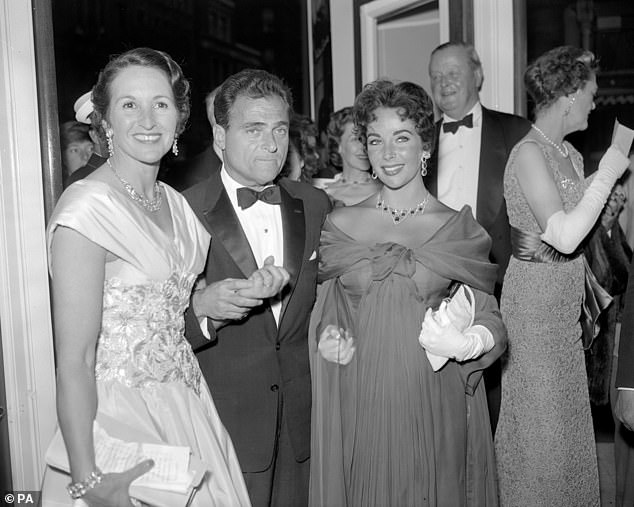Lady Pamela Berry: Passion, Politics And Power by Harriet Cullen (Unicorn £25, 224pp)
It’s extraordinary that as recently as the mid-1950s, the misogynistic expression ‘petticoat power’ was still in use in Britain.
It referred to the soft power wielded by wives of politicians and newspaper magnates, who gave dinner parties at which they influenced political outcomes through snide conversation and witty gossip.
It sounds like something out of the 18th century: high-society wives changing the course of politics with a flick of a fan or the reveal of an ankle.
But Lady Pamela Berry, above, was accused of petticoat power in the run-up to the Suez Crisis in 1956, when an editorial in the Daily Telegraph, the newspaper owned by her husband Michael Berry (the future Lord Hartwell), stated that PM Anthony Eden’s administration lacked ‘the smack of firm government’. Pamela was suspected to the be the ‘agent provocatrice’ behind the piece.
At one of her earlier lunch parties, she’d declared Eden to be ‘far too ill ever to be prime minister’. That caused her to fall out with Eden’s wife, Clarissa. There were bitter exchanges of letters between the two women, leading the American press to revel in what they called ‘a petticoat feud’.
In the Left-wing New Statesman, Malcolm Muggeridge also demolished Eden, describing ‘his ingratiating smile and gestures, and the utter nothingness of what he had to say’.
It so happened that Muggeridge was Pamela’s lover. Was she influencing him, too? They’d fallen in love in 1953, when she was 39 and he was 49. Both were married.

Newly Weds: The wedding of Lady Pamela Smith to Michael Berry
Pamela was insanely jealous of Muggeridge’s wife Kitty, obsessed by the thought of them sleeping in the same bed, and feeling sorry for herself as ‘the other woman’. Of Pamela, Muggeridge wrote in his diary, ‘She is not clever, not pretty, not nice… a remarkable person.’
Their affair carried on for at least ten years. At the Labour Party Conference in 1963, Pamela was spotted with her shoulders covered in leaves and hay after a ‘stroll’ with Muggeridge.
The author of this lively, if heavily name-droppy, biography of Lady Pamela is her daughter Harriet Cullen. Clearly not a nice mother, Pamela was a typically unaffectionate, hands-off, snobbish, upper-class mother of the mid-20th century.
The children were packed off to the country and saw their parents only at weekends. When Harriet’s sister Eleanor had to go to hospital for terrifying electric-shock therapy, Pamela left to go on holiday in the South of France.
Born in 1914, Pamela was the daughter of F. E. Smith, Lord Birkenhead, Lord High Chancellor. He spoiled her rotten and died when she was 16. Much later, her great friend the journalist Paul Johnson would say of her that ‘she really wanted to be a politician, but felt debarred by her sex’. He railed against the way her father had ‘restricted the formal education of his intelligent daughters, at the same time as encouraging in both an unusual social precocity and worldliness’.
It was a recipe for trouble. Pamela couldn’t resist being at the centre of political and cultural intrigues. Her lunch and dinner parties were certainly never dull.

Society hostess: Lady Pamela Berry (left) with Michael Todd and Elizabeth Taylor
At one dinner party at their house in Westminster in 1951, John Betjeman first met Elizabeth Cavendish, setting off a lifelong love affair, and Guy Burgess failed to turn up, although Anthony Blunt did.
It later emerged that Burgess had left for Russia in a hurry, knowing he was about to be arrested for betraying US atomic secrets. It wasn’t till 1979 that Blunt himself would be revealed as a spy.
One of the few pieces of advice that Pamela gave to her daughters was ‘Be bloody, bold and resolute.’ With her Left-wing lover, and her access to a national Conservative paper through her husband, Pamela herself was indeed a kind of lunch-party ‘Lady Macbeth’.






